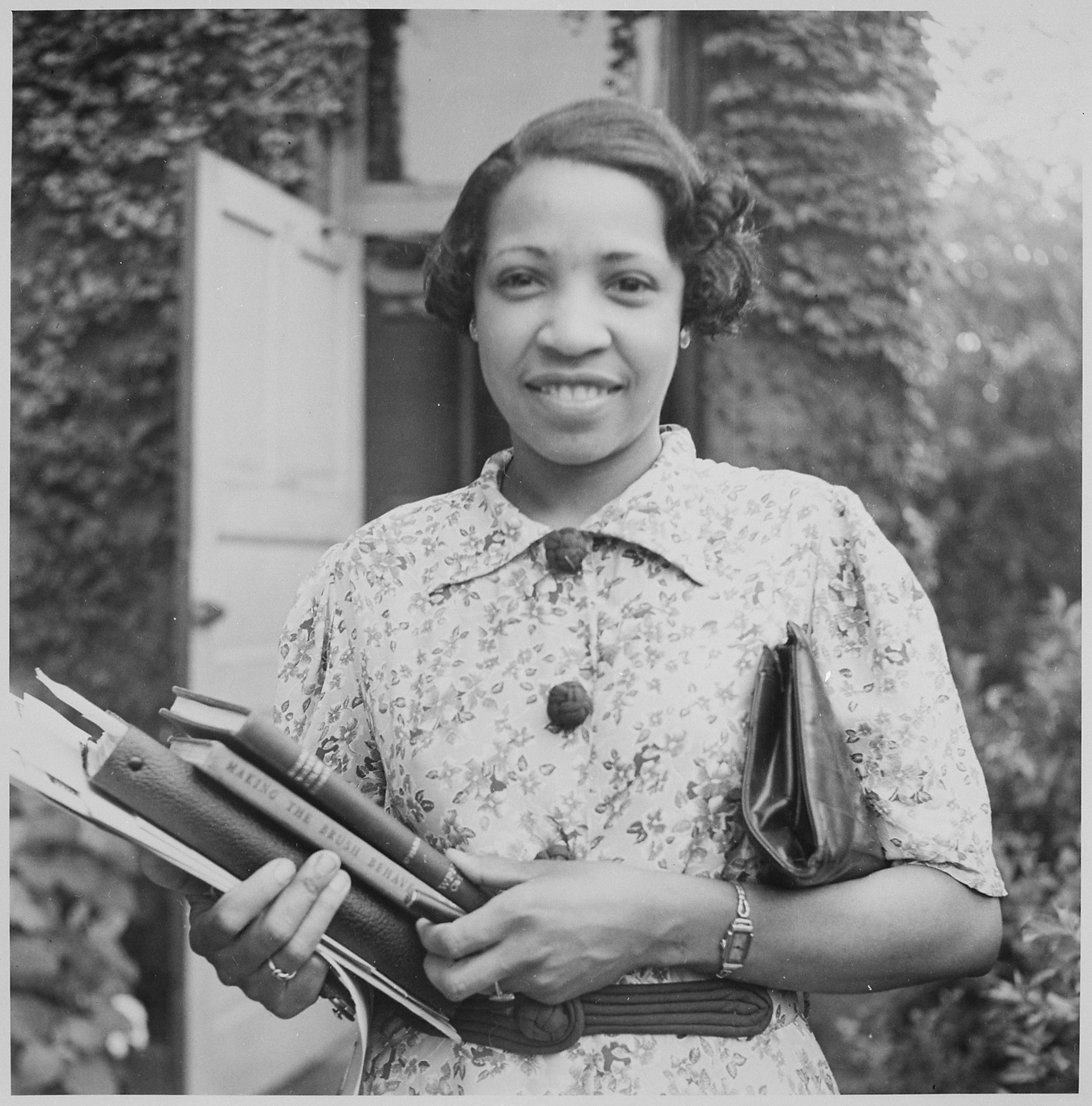More about Loïs Mailou Jones
- All
- Info
- Shop
Works by Loïs Mailou Jones

Contributor
Like Richard Wright, James Baldwin, Josephine Baker and many others, Lois Mailou Jones had to go to Europe to find a career in the arts.
Her family vacationed in Martha's Vineyard, where she made the acquaintance of the successful black artists Harry Burleigh and Meta Vaux Warwick Fuller. Counseling her about her opportunities after finishing museum school, they agreed that in order to find success she would need to go abroad, because her own fellow citizens would never appreciate her artistic insights unless she first proved, as Fuller had done after studying with Auguste Rodin, that her skill was recognized by the European elites. Burleigh and Fuller cited the examples of Henry O. Tanner and Hale Woodruff, convincing Mailou Jones to travel to Europe for freedom of expression. Arthur Schomburg, the prominent historian, saw her off to Paris on an ocean liner on September 1st, 1937.
You can confront the twin questions: why was the United States so bigoted and self-destructive that it put up so many humiliating barriers to her success, and why was Paris ready to recognize her greatness? The former question has to do with the afterlife of slavery continuing to be a problem, and the latter pertains to the French revolution, especially as it relates to the former colonies of Haiti, Algeria, and Senegal. Haiti and Africa were both central influences in the development of Mailou Jones' work. An important part of her oeuvre is her 1938 oil painting Les Fétiches, whose focus on masks influenced Fanon's classic monograph "Black Skin, White Masks."
At various times the community helped Mailou Jones to understand the more intimate details of the horrors of oppression. She describes one such encounter:
"I did another impressionistic painting of a man about to be lynched, entitled Mob Victim...I felt I had to make a statement on canvas about lynching. I needed a model, and I recall walking down U Street and discovering this tall, black gentleman. I remember he had two guitars on his back and he was rather a clochard-looking type with a slouched hat and a long black overcoat, a curious looking individual. But under that hat, I caught the expression of his eyes and his bearded face; he was just the type I needed. I went up to him and asked him if anybody had ever painted his portrait. He didn't quite understand what I was talking about, and I said, "This is my address. Come to this address; I want to make a picture of you." In two days he came to my apartment here in Washington, and I mentioned that I wanted him to pose as a man about to be lynched. I said, "You have to open your shirt and take the look." He said, "But daughter, you know I worked in the South, and my master took me and the other workers in the wagon to see one of our brothers lynched." I said, "Well, tell me about it. How did he look?" "Well," he said, "he just had his hands tied and he just fastened his eyes on the heavens." "Don't move," I said. "That's just the pose." He turned out to be a wonderful model. I remember that I first had a rope around his neck, going up out of the canvas. But that was an overstatement. So I simplified it. I said, "No, we don't need the rope. We just need his expression and the tying of his hands." And so it was. I used him many, many times-once as The Banjo Player and again as Janitor. He was one of the best models that I had."
Despite the many indignities society heaped upon her, Mailou Jones never lost her faith or trust in her practice. Having learned to make a living as an artist very early in her life by making art anonymously, she subsequently remained dedicated to putting her name on her work, despite the extra energy and risk involved. And as an essayist, she was able to examine an important question: society's responsibility to the artist.
Sources
- Hartman, Saidiya. Wayward Lives, Beautiful Experiments: Intimate Histories of Social Upheaval. New York: W. W. Norton, 2019.
- Jones, Lois Mailou. Lois Mailou Jones. "Writings by Lois," https://web.archive.org/web/20151229234241/http://loismailoujones.com/i…
- Rowell, Charles H. "An Interview with Lois Mailou Jones." Callaloo 12, no. 2 (1989): 357-378, http://xroads.virginia.edu/~ug01/westkaemper/callaloo/mailoujones.html
- Staff, MSRC, Howard University. "JONES, LOIS MAILOU" (2015), Manuscript Division, Paper 112. http://dh.howard.edu/finaid_manu/112.
Featured Content
Here is what Wikipedia says about Lois Mailou Jones
Lois Mailou Jones (1905–1998) was an artist and educator. Her work can be found in the collections of the Smithsonian American Art Museum, The Metropolitan Museum of Art, the National Museum of Women in the Arts, the Brooklyn Museum, the Museum of Fine Arts, Boston, Muscarelle Museum of Art, and The Phillips Collection. Jones is often associated with the Harlem Renaissance.
Check out the full Wikipedia article about Lois Mailou Jones















